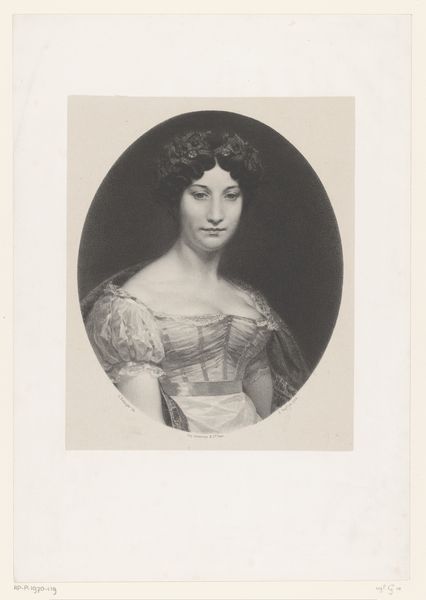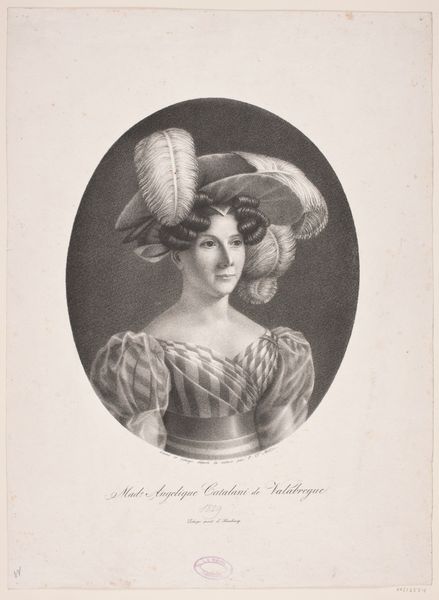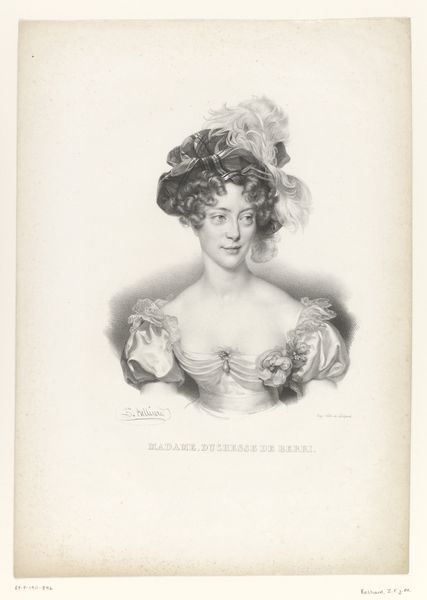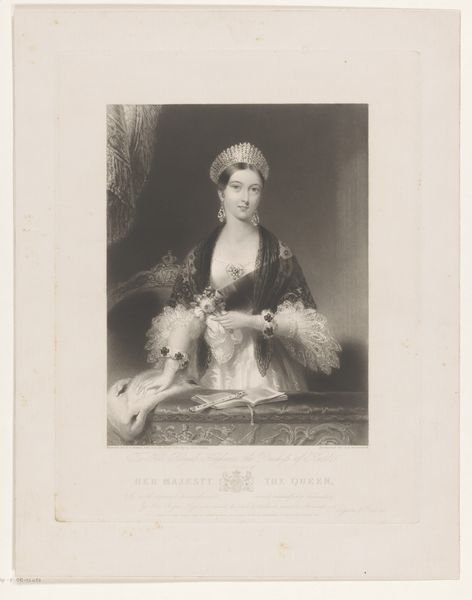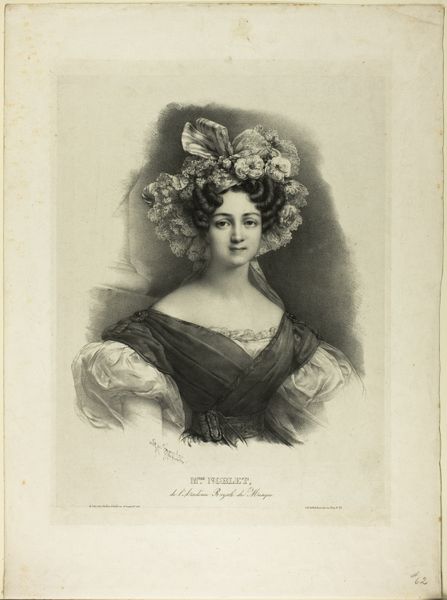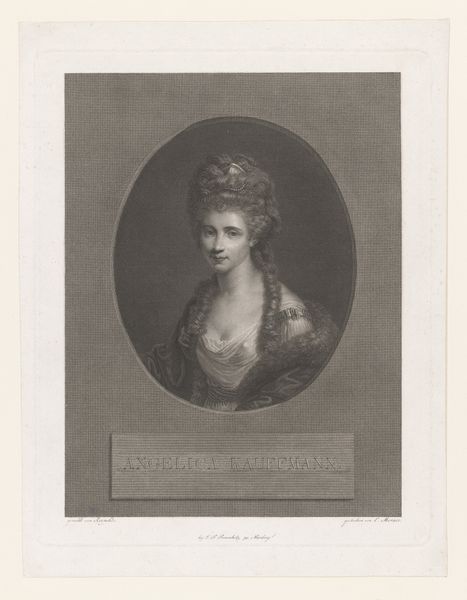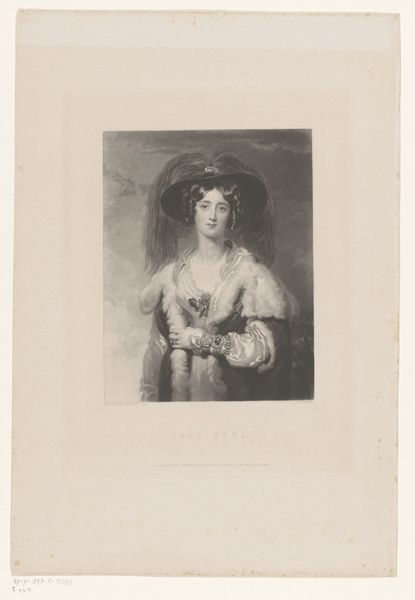
drawing, lithograph, print
#
portrait
#
drawing
#
lithograph
# print
#
historical photography
#
romanticism
#
19th century
Dimensions: height 458 mm, width 318 mm
Copyright: Rijks Museum: Open Domain
Editor: Here we have Henri Grevedon’s "Portret van Alexandrine Noblet," a lithograph from around 1829-1830. The lithographic process gives it this wonderfully soft, almost photographic quality. What jumps out to me is the contrast between the elaborate hat and dress, and Noblet’s rather reserved expression. What do you see in it? Curator: I see a product deeply embedded in the social and material conditions of its time. Look at the lithography itself. This wasn’t high art's domain, but a reproductive medium, churning out images for mass consumption. This portrait isn’t about Alexandrine Noblet, the individual; it's about constructing an image of Bourgeoisie class, using newly accessible technologies. Editor: So, you're saying the material process shaped its artistic intention? Curator: Absolutely! The lithograph allowed for widespread duplication. Consider, too, the clothing—the lace, the velvet, even the feathers. These were goods manufactured through exploitative labor practices and then consumed and displayed to signify status. Grevedon’s portrait is essentially an advertisement for, and celebration of, these industries. Editor: That’s a very different read than how I first saw it! I hadn't thought about the lithograph process as a commercial force. Curator: The rise of lithography democratized image production. But did it really empower? Or did it simply extend the reach of dominant ideologies by representing its wealthy patrons? This is a piece meant to circulate, to be consumed visually just like the fashions it depicts. Do you see that connection now? Editor: Yes, absolutely. Seeing the image as a material product shifts its meaning entirely. Curator: Exactly. It is the material conditions that gave rise to both its creation and the creation of an idealized sitter from the privileged social class of the era. The way it circulates, replicates, and how the consumption of luxury materials impacts society. All key. Editor: Thanks. That's given me so much to think about!
Comments
No comments
Be the first to comment and join the conversation on the ultimate creative platform.
